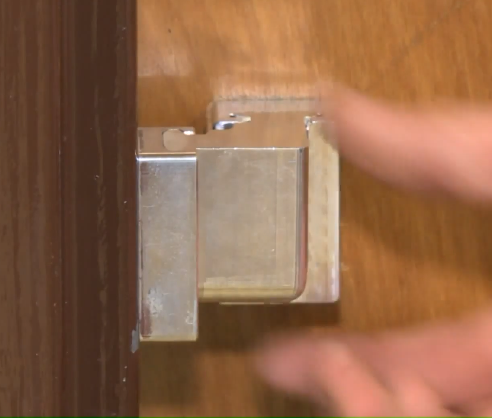Student STEM Contest Inspires Teacher
Studies suggest that competitions – whether an in-class design challenge, local science fair, or national contest like FIRST Robotics and the Regeneron Science Talent Search – can motivate and inspire students to pursue STEM.
But participation in such problem-based learning opportunities also can energize teachers.
Just ask Kevin Lay, a science teacher at Owensville High School in Missouri, whose students won top national honors and $100,000 in the 2019 Samsung Solve for Tomorrow contest for designing a simple, inexpensive door lock to thwart school shooters from entering a classroom.
“This journey, it’s been a real eye-opener for me,” he says of the months-long challenge, which asks students to develop ways to improve their community using STEM and culminates in a Shark Tank-style pitch session at the national level. “It’s changed the way I teach.” For example, Lay has gone from taking a “very systematic” approach, assigning homework and grading on the traditional A to F scales, to looking more in depth at assessments and raising his expectations of what students are capable of learning and doing.
That includes abandoning his role as expert.
“You become more vulnerable,” acknowledges Lay, who calls it “incredibly nerve-wracking as a teacher” to relinquish “that authority to always be able to answer questions.” Yet he didn’t have a working knowledge of metal casting, machining, or other element needed to manufacture a working prototype.
By stepping back, he helped spur students Paige Tayloe, Jonah Hoffman, and Trey Fisher (pictured on intro, video, and photo, above, with Lay, second from left, and Samsung executive vice president David Steel and Ann Woo, senior director of corporate citizenship) to become resourceful. They interviewed law enforcers to find out what systems exist now, learning that deterring or delaying a gunman from entering the classroom could save lives. They then sought help from local engineer Tad DeWalt, the general manager at LMI Aerospace, to create a computer-assisted design, choose the strongest, least expensive materials, and then build a prototype model.
“They’re talking to aerospace engineers about CAD design and tensile strength,” marvels Lay, who saw how far beyond his expectations students could go if given a chance. As he told KPLR TV in St. Louis, “No, teachers don’t have all the answers all the time. When you connect them [students] with people who do, the sky’s the limit.”
“As a teacher, you have to learn to get out of the way,” concludes Lay, who underscores the importance of having a supportive principal and school superintendent that allowed him to do that. He notes that “collaboration and group learning” are favorite buzzwords in education, but projects like Samsung’s Solve for Tomorrow contest mimic the kind of real-life problem solving that’s rarely found in the classroom. “In the real world, you connect with people who know things,” he observes.
Lay also found that design challenges pushed him to build a different relationship with students, not only learning about their families but also the “why and what drives them.”
“So many things are going to change this coming year, and it starts with me and the environment I create in my classroom,” vows Lay. “I’m nervously excited” at the prospect, he adds, “and it’s been a long time since I’ve felt that way!”
Students relished applying classroom lessons to real-world problem solving. Sophomore Paige Tayloe, for instance, used “a lot” of math to ensure their device – basically a stout, V-shaped chunk of aluminum that can be dropped into a bracket to form an immobile door hinge – met basic physics laws. The experience sparked her interest in majoring in biomedical engineering.
“It’s been great,” concurs teammate Jonah Hoffman, who “had zero experience” at the start of the contest and had to learn how to design something from scratch. “This shows us we can do it.” Equally confidence-boosting is the ability to explain technical details to a lay audience. “If I never had this class, I’d probably be a bad communicator,” says Hoffman.
Two other teams were national winners. (See videos, below.) A group from Holly Grove Middle School in North Carolina invented a way to halt drivers from hurtling around school buses and endangering kids as they board, as nearly happened to a classmate. And a team of Chesapeake, Va., middle school students created a website and app for high-needs students to get eye tests and free prescription eyeglasses – also were national winners.
The three 2019 champions were among some 2,000 schools whose teams are selected to compete each year, with 250 making the state finals. The Solve for Tomorrow contest has received almost 20,000 entries and distributed $25 million over the past nine years. There are now enough alumni – 45 teachers in 25 states – that Samsung is forming a STEM teachers academy to encourage the spread of quality project-based learning in STEM classrooms nationwide.
Holly Grove Middle School, N.C.
Deep Creek Middle School, Chesapeake, Va.
Filed under: Class Activities, K-12 Education News, K-12 Outreach Programs, Special Features
Tags: Competitions for Students, Contest, Engineering, Engineering Design, Professional Development, Samsung Solve for Tomorrow Contest, STEM education, Teachers










